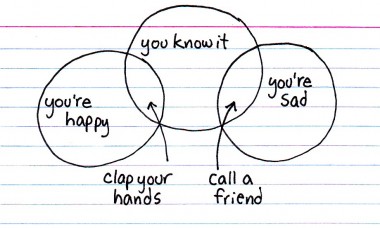Jan 06 2011
Getting Things DoneEach day learn something new, and just as important, relearn something old. – Robert Brault.
Since I spent today sorting out my office at home, I thought it timely to review David Allen’s system for efficiency called ‘Getting Things Done’.The first stage is to collect all your physical and mental stuff together into an inbox (or, more usually, a number of inboxes).
This collection is then sorted according to the GTD rules – which includes recording ‘next actions’ in a context sensitive way. That means, recording everything you need to do when you are at work, at home, using email, using a phone etc.
David Allen calls it the art of ‘stress-free productivity’. It is stress free because at any given time you know everything that you need to do, and can prioritise appropriately. You don’t have bagging doubts that there is something else you really should be doing right now. I’ve posted about this before at http://practiceimprovement.com.au/2005/10/hipsterpda/GTD involves getting all the ‘stuff’ out of your head and stored in a system where you can be sure it will be dealt with. Stuff is “anything you have allowed into your psychological or physical world that doesn’t belong where it is, but for which you haven’t yet determined the desired outcome and the next action step.” Stuff includes all the ‘open loops’ in our lives – incomplete projects, reports, meetings, ideas, plans, commitments, tasks etc. We all spend so much time running around with all this ‘stuff’ in our heads that there’s no room for anything else. The answer is to get this stuff into a trusted system.
David Allen recommends that we systematically decide what ‘Next Action’ should be taken on each bit of stuff, and put these ‘Next Actions’ in context based lists. And review the lists regularly.
There was a long discussion of GTD and an interview with David Allen in Wired Magazine.
A search for GTD on the google has 4 million results. The best way of getting started in GTD is reading David Allen’s book, ‘Getting Things Done’, which for some reason was published in Australia as ‘How to Get Things Done”.
David Allen’s website is at http://www.davidco.com/
 Getting the best gig after Uni
Getting the best gig after Uni








 RSS - Posts
RSS - Posts

